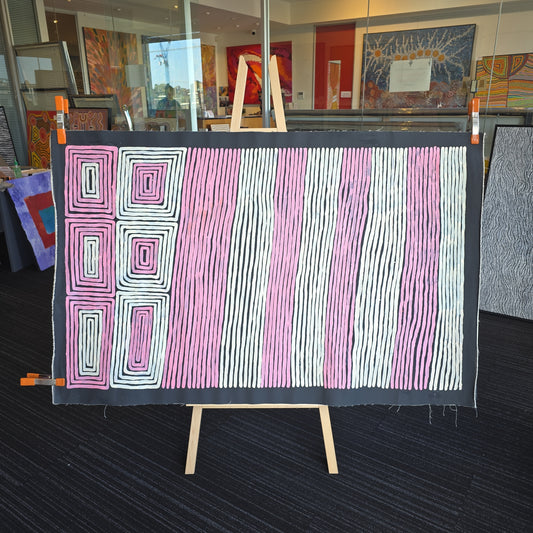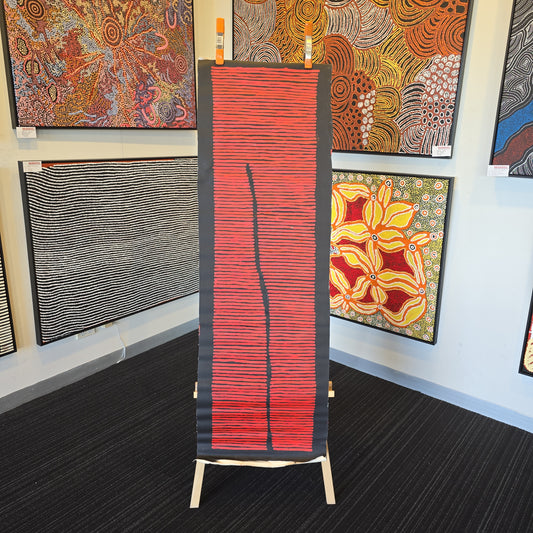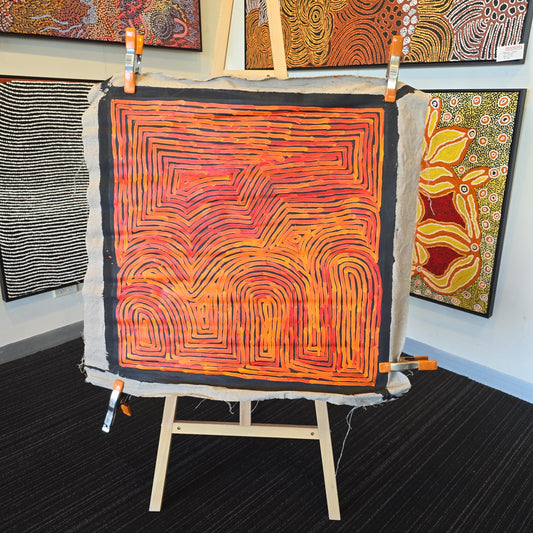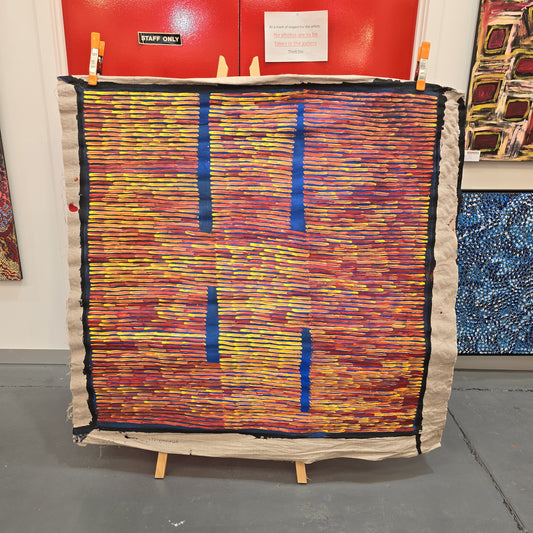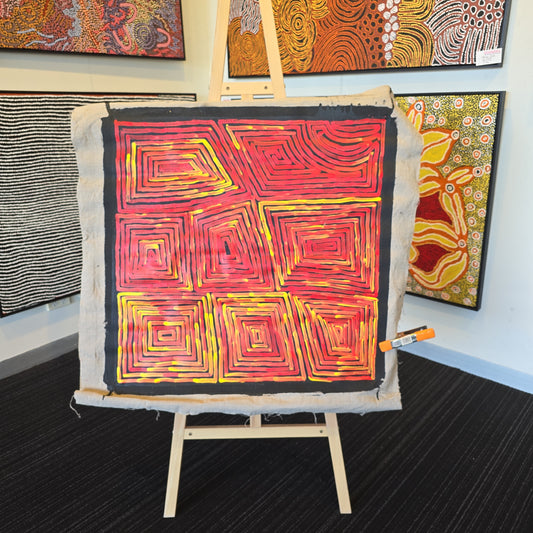Collection: Ronnie Tjampitjinpa
-
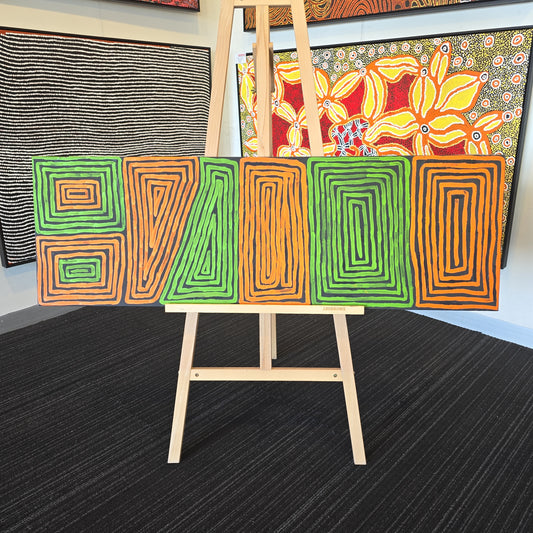 Sold out
Sold outRonnie Tjampitjinpa 400 mm x 1200 mm
CODE : 613Vendor:Ronnie TjampitjinpaRegular price $5,500.00 AUDRegular priceUnit price / per -
Tingari Cycle 90 cm x 145 cm
CODE : 636Vendor:Ronnie TjampitjinpaRegular price $10,000.00 AUDRegular priceUnit price / per -
Ronnie Tjampitjinpa 400mm x 1500mm
CODE : 606Vendor:Ronnie TjampitjinpaRegular price $5,900.00 AUDRegular priceUnit price / per -
Ronnie Tjampitjinpa 760mm x 760mm
CODE : 3811Vendor:Ronnie TjampitjinpaRegular price $7,500.00 AUDRegular priceUnit price / per -
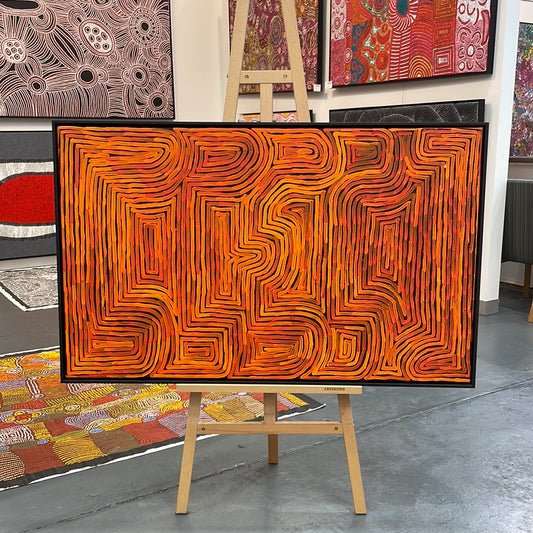 Sold out
Sold outRonnie Tjampitjinpa 720mm x 1200mm
CODE : 3185Vendor:Ronnie TjampitjinpaRegular price $8,500.00 AUDRegular priceUnit price / per -
Ronnie Tjampitjinpa 1220mm x 1260mm
CODE : 4059Vendor:Ronnie TjampitjinpaRegular price $11,500.00 AUDRegular priceUnit price / per -
Ronnie Tjampitjinpa 760mm x 760mm
CODE : 3812Vendor:Ronnie TjampitjinpaRegular price $6,500.00 AUDRegular priceUnit price / per -
Ronnie Tjampitjinpa 630mm x 730mm
CODE : 3183Vendor:Ronnie TjampitjinpaRegular price $5,900.00 AUDRegular priceUnit price / per -
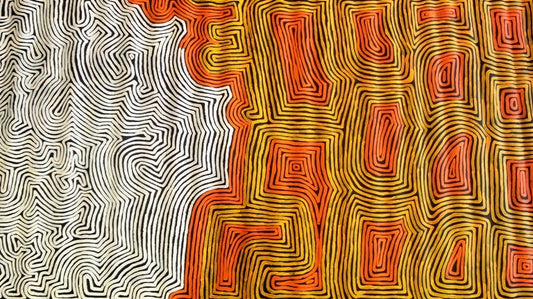 Sold out
Sold outRonnie Tjampitjinpa 1110 x 2050
CODE : 3182Vendor:Ronnie TjampitjinpaRegular price $15,900.00 AUDRegular priceUnit price / per
Ronnie Tjampitjinpa stands as an influential figure among Indigenous Australian artists because of his powerful figures along with his sacred Dreaming story artwork. Tjampitjinpa was born approximately in 1943 in the isolated Western Desert area of Australia where he belongs to the Pintupi people who incorporate their cultural customs deeply into their artwork. The Western Desert art movement welcomed Tjampitjinpa as one of its youngest members in the early 1970s to start his artistic path. Throughout his adult life, Tjampitjinpa has maintained an essential initiative to conserve Indigenous Australian art while showcasing his artwork throughout Australia and worldwide.
Through his artwork, Tjampitjinpa illustrates the Tingari cycle which contains sacred Dreaming stories that serve as important cultural teachings for Pintupi people. His unique approach to art using bright earth colours and symmetrical patterns made him an essential figure in modern Indigenous art. As well as producing art Tjampitjinpa dedicated himself to supporting the Aboriginal land rights movement through his active advocacy for Indigenous land ownership. Through his work, Tjampitjinpa inspires understanding while teaching people about both Pintupi cultural history and Australia's broader Aboriginal cultural history.
Early Life and Cultural Influences
Tjampitjinpa Ronnie was born on the lands of Tjiturrunya which lies near Muyinnga in Western Australian territory. From birth Ronnie Tjampitjinpa experienced a traditional Pintupi lifestyle as his family followed the customs of this semi-nomadic people within the harsh but majestic Western Desert. During his childhood he lived in the oral traditions and ceremonial practices that extended through countless generations.
Throughout the 1950s drying conditions led Pintupi families and numerous other members of his tribe to undertake a long journey east which aimed at finding sustenance and precious water resources. His people first made Haasts Bluff their home before moving to Papunya which the government established as their settling common point for various Aboriginal groups. His transition to Papunya introduced both difficult circumstances and helped shape the beginning of his artistic journey. During this period at Papunya an entirely new style of Indigenous Australian art named the Western Desert art movement emerged.
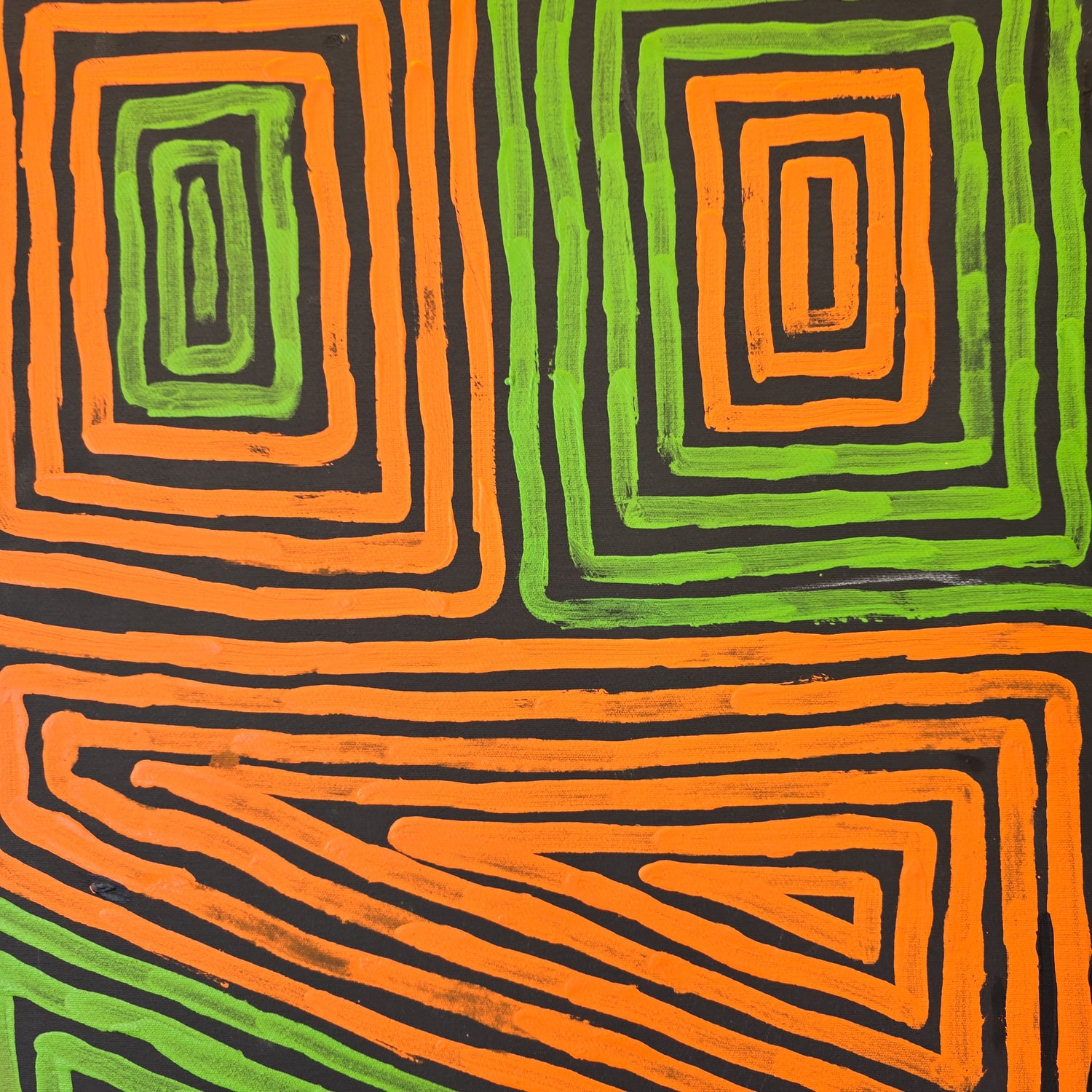
The Western Desert Art Movement
Tjampitjinpa observed the founding stages of the Western Desert art movement when he was young at Papunya as senior Indigenous artists Geoffrey Bardon and Papunya Tula Artists cooperative members established this transformative urban art movement. Through contemporary methods the movement aimed to show Dreaming stories while maintaining sacred cultural information.
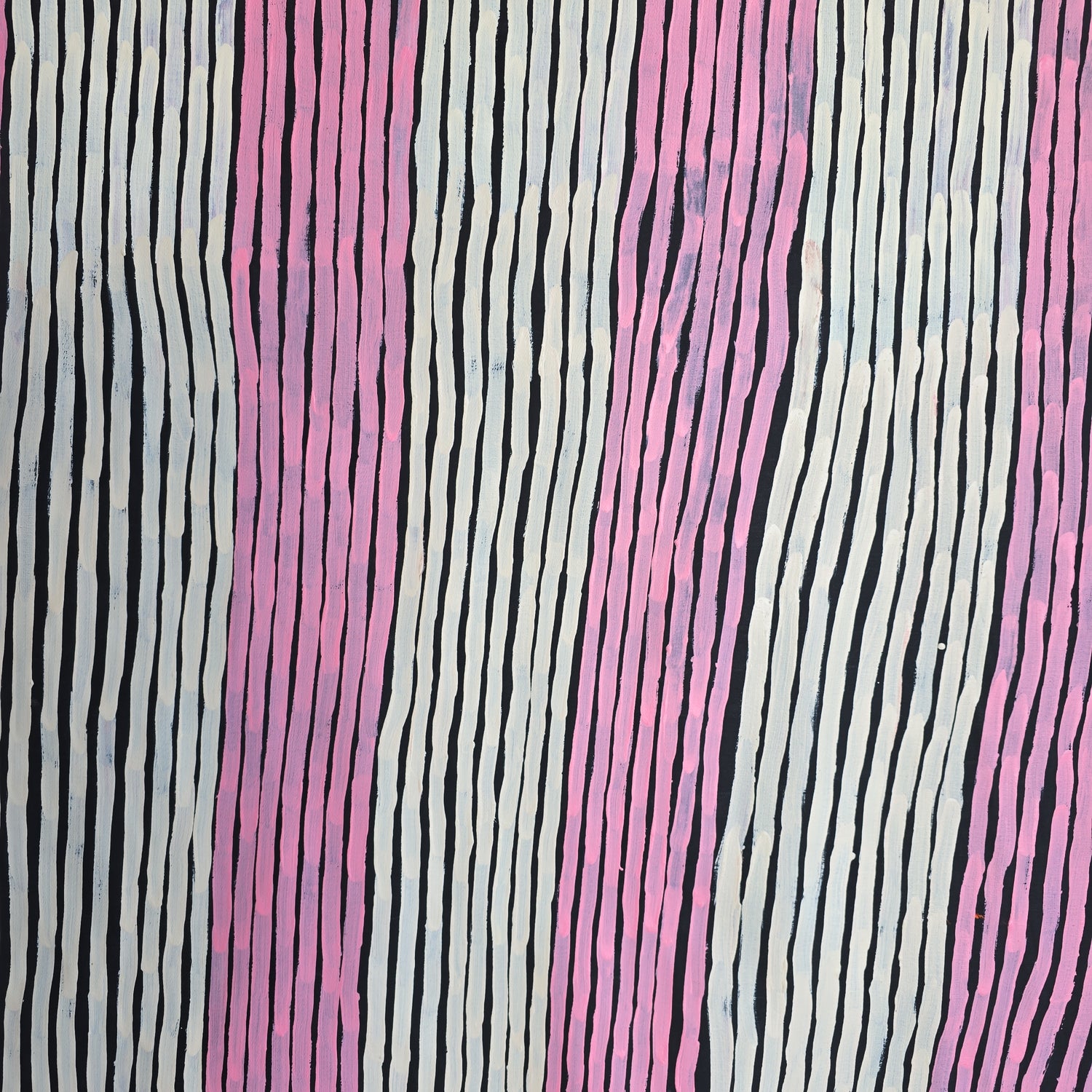
Tjampitjinpa established his painting skills through learning from some leading artists during the early 1970s. Soon after starting to paint he created a distinctive artistic style that remained true to Pintupi cultural symbolism.
His paintings feature specific patterns and symmetrical artworks display the sacred Tingari Dreaming stories of indigenous origin. Fantastic linear elements provide the artwork with both a depth effect and flowing movement. Traditional desert colors such as reds and yellows and blacks become dominant across his artwork since they represent the landscape of the desert.
Artistic Style Development
The 1980s brought recognition to Ronnie Tjampitjinpa as he became a leading figure in the Western Desert art movement. Tjampitjinpa started creating basic yet appealing compositions while abandoning the dot method which early Papunya artists traditionally favored.
The Tingari Dreaming serves as his usual subject matter because its stories show ancient beings who walked through country making environments while making cultural laws. The stories represent the core of Pintupi identity and they originally transmitted through dance art and song traditions. Tjampitjinpa has succeeded in translating traditional narratives through contemporary artistic methods which makes his artwork appeal to international gallery and exhibition spaces.
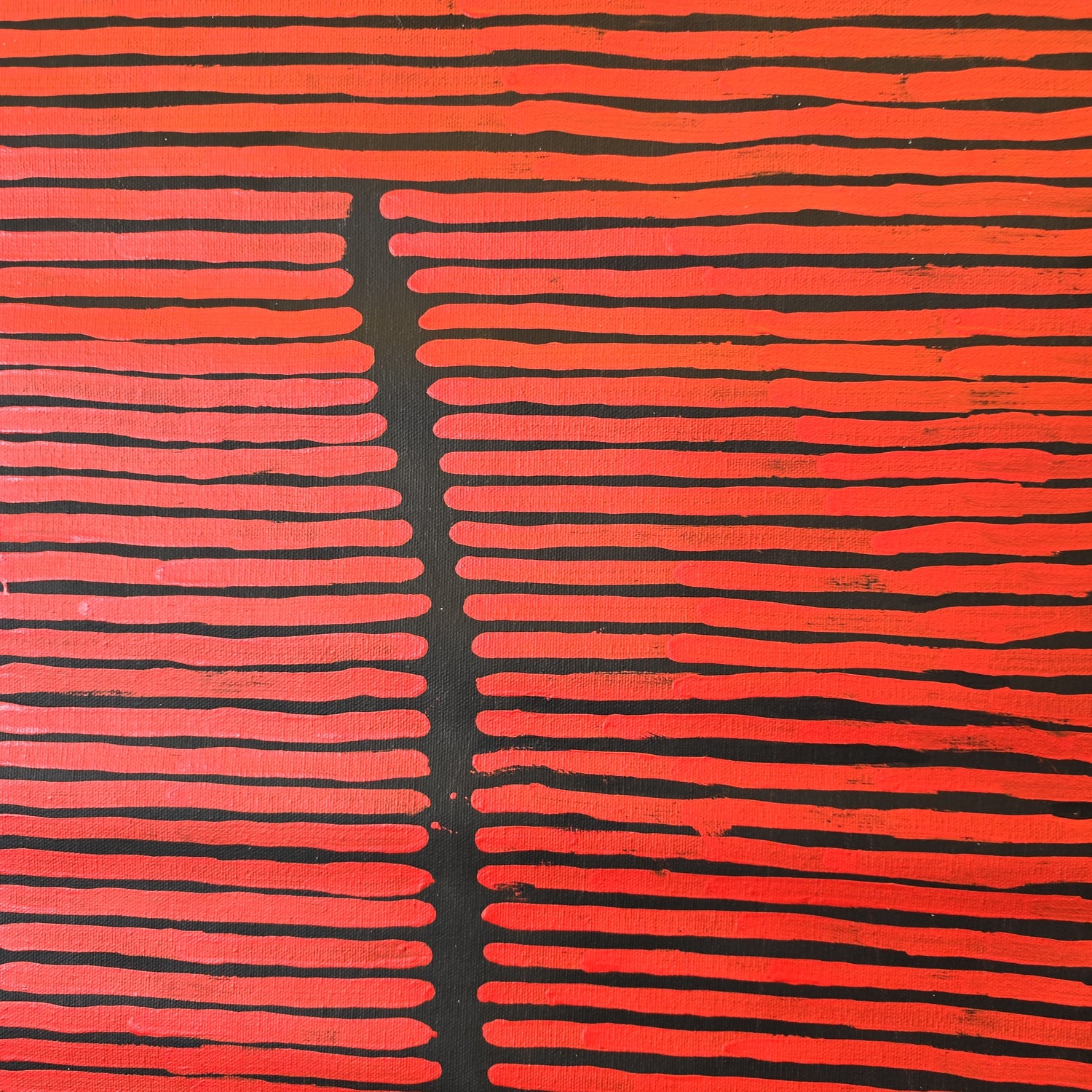
Advocacy for Aboriginal Land Rights
Tjampitjinpa dedicated himself to both painting achievements and participated in the Aboriginal land rights movement throughout the 1980s. He took part in numerous meetings alongside discussions to fight for Pintupi ownership of their land along with protecting their cultural heritage. The Ininti land claim stood as his main advocacy point due to its purpose of returning native territories to the Pintupi people.
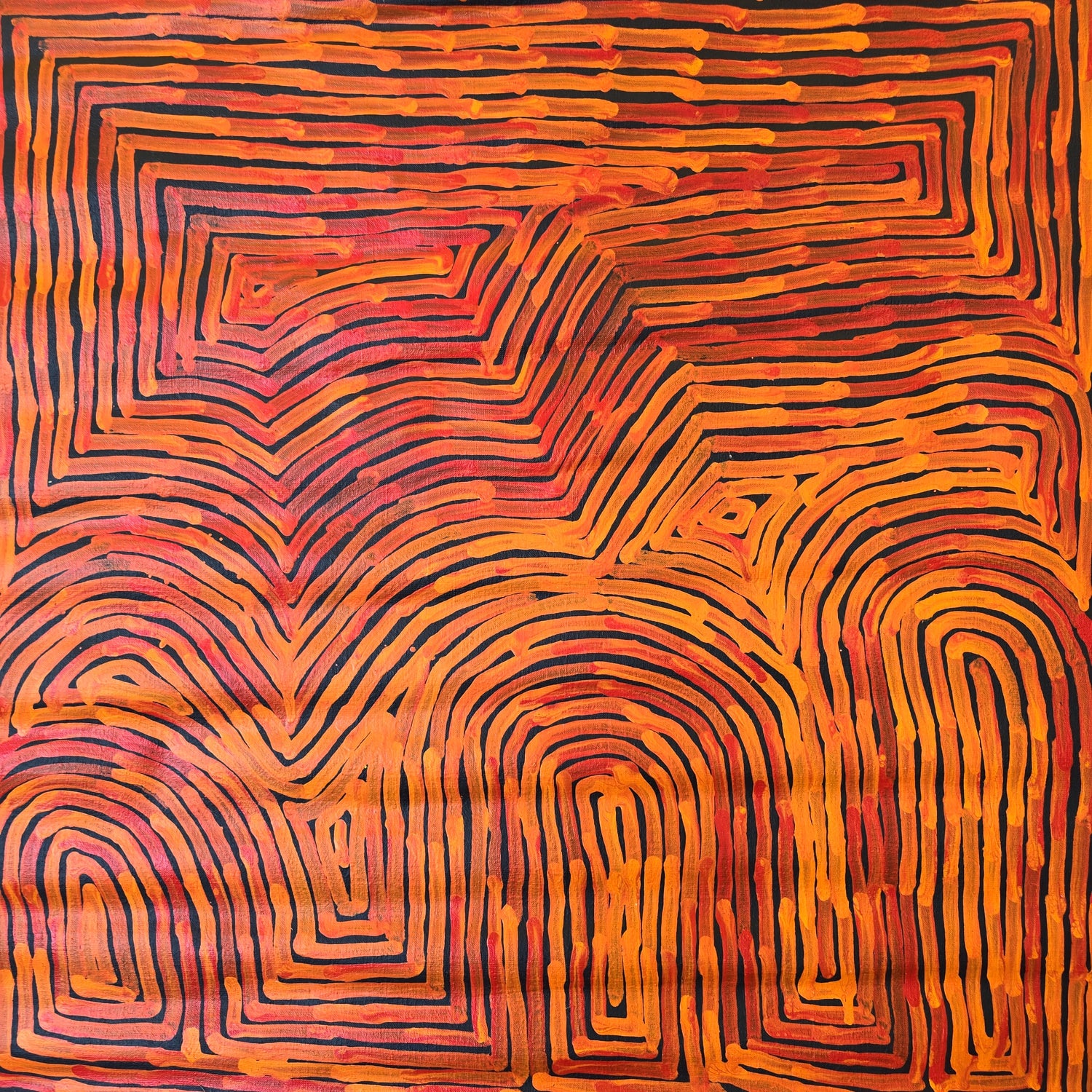
After concentrating only on painting the later stages of his life he still continued to play an essential part in drawing awareness towards Indigenous Australian struggles. His art, in many ways, serves as a visual representation of the ongoing connection between Aboriginal people and their ancestral lands.
Major Achievements and Global Recognition
Through various awards and permanent gallery collections in institution buildings Ronnie Tjampitjinpa has gained recognition for his artistic mastery.
The Alice Springs Art Prize victory from 1988 launched his career toward international recognition.
His artistic repertoire gained important positions in leading museums and galleries across the world including:
- National Gallery of Australia
- National Gallery of Victoria
- Art Gallery of New South Wales
- Musée du quai Branly, Paris
The Art Gallery of New South Wales showcased a retrospective exhibition in 2015 to mark the forty-year anniversary of his work in Indigenous Australian art.
The artist continues attracting worldwide art enthusiasts who collect and display his exhibitions at leading museum and gallery locations.
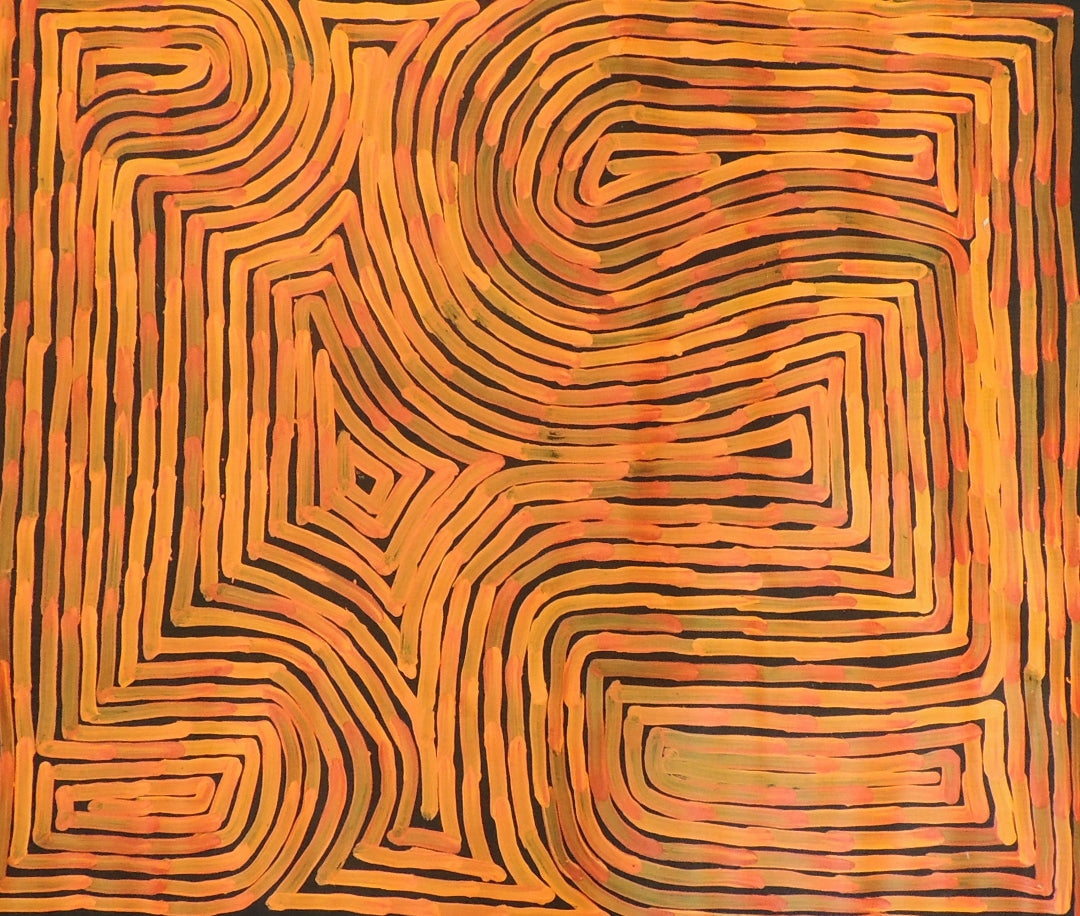
The Lasting Legacy of Ronnie Tjampitjinpa
The contemporary Indigenous Australian art scene today honors Ronnie Tjampitjinpa as a master artist of modern times. His creative approach to Aboriginal art serves as the foundation that encourages the creation of fresh artistic work by younger indigenous artists. Through his artwork Ronnie Tjampitjinpa protects both the sacred traditions of Pintupi heritage and their spiritual and historical perspectives for posterity.

The Western Desert art movement has been strengthened by his work which acted as a vital link among traditional Aboriginal storytelling with contemporary artistic techniques enabling Indigenous Australian art to reach worldwide audiences. The body of his work safeguards the spiritual wisdom and tribal tales of his people which will be passed through time.
Explore the Art of Ronnie Tjampitjinpa with Mandel
Ronnie Tjampitjinpa’s journey from a remote desert upbringing to becoming an internationally recognized artist is a testament to the power of Indigenous storytelling through art. His dedication to preserving Pintupi traditions, both through activism and artistic expression, has made him a revered figure in the world of contemporary Indigenous art.
For those interested in experiencing the brilliance of Ronnie Tjampitjinpa’s work firsthand, visit Mandel Aboriginal Art Gallery. Viewers can find numerous of his artworks within our online collection while those interested can contact us about his artworks.


